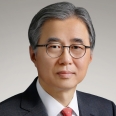There is a concern that U.S. President Donald Trump’s protectionist trade policy, of which his tariff war is the opening salvo, threatens to trigger a situation similar to the 1997 Asian Financial Crisis. That’s because worsening export conditions for Asian countries and foreign capital investment reductions are leading to falling currency values and financial market instability. The 1997 crisis which hit countries such as Indonesia, Thailand, and South Korea exposed the vulnerability of regional economies. Asian countries faced sharp currency depreciation and liquidity crises, and South Korea experienced what came to be known as the “International Monetary Fund (IMF) crisis.” Although the IMF intervened to respond to the crisis at the time, its tough austerity policies were criticized for infringing upon the autonomy of the countries under its program and for slowing their economic recovery.
In response, there were discussions about establishing an Asian Monetary Fund (AMF) based on the 1997 Miyazawa Plan, in which the Japanese government would provide funds in the event of a currency crisis in Asia. However, the plan was scuttled due to U.S. opposition. The reason the United States opposed it at the time was that the AMF proposed to guarantee more generous conditions compared to the IMF, which was inconsistent with the U.S. policy position. The United States also did not want Japan to gain too much influence in Asia. In a January 1998 meeting, the late Republican Senator John McCain candidly told Dr. MJ Chung, who was a member of the National Assembly at the time, that “I don’t know why the United States opposes the AMF concept,” adding that U.S. opposition was due to its concerns about Japan’s growing influence.
Much has changed today. At the time of the AMF proposal, the United States seemed to be concerned that “easy money” would not fundamentally address the causes of Asian countries’ financial crisis and could instead cause what in finance are called “moral hazards.” However, this concern could be mitigated by adjusting the conditions attached to financial assistance.
The Trump administration wants to reduce the burden on the United States for maintaining the international order and instead increase the contribution of allies and like-minded countries. The creation of an AMF would serve that purpose. Currently, Asian financial markets’ heavy dependence on the U.S. dollar makes them structurally vulnerable to external shocks such as the global economy. The IMF alone cannot respond to the growing needs of Asian countries. China is likely to try to exploit this gap and leverage its rising influence as a tool for exerting diplomatic and strategic coercion.
China is seeking to expand its influence within the Asian financial order. At the Boao Forum in April 2023, it proposed the establishment of a China-led AMF. If an AMF that includes South Korea and Japan is established, the United States would be able to balance China’s dominance through the contribution of its allies. Moreover, the AMF could reduce Asian countries’ dependence on the U.S. dollar by expanding currency swaps among themselves and promoting the use of regional currencies. This would help create a stable financial environment, which also aligns with U.S. interests.
It is time to put forward a clearer and more proactive position regarding the creation of an AMF. Domestic and international discussions should begin to shape the AMF’s desired structure and role based on cooperation with Japan as the original proponent as well as the United States. This discussion should also reflect the characteristics of Asian countries with different development stages and strategies.
* The view expressed herein was published on March 28 in The Dong-a Ilbo and does not necessarily reflect the views of The Asan Institute for Policy Studies.

 Facebook
Facebook Twitter
Twitter